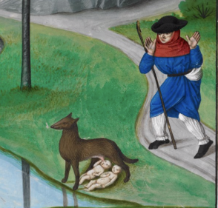Who’s Afraid of the Big, Bad Wolf? And Why?

Monday 4 March 2019, 4.30PM
Speaker(s): Laura D. Gelfand (Utah State University)
In Scotland, plans for the controlled release of wolves into a fenced-off private estate continue to face strong resistance, while in the U.S., the Trump administration is trying to strip protections from the grey wolf to facilitate trophy hunting. Today’s antipathy toward wolves has a very long history, but it hasn’t always been this way. Most ancient cultures feared and admired the wolf, and it was usually associated with the most powerful deities. However, in the Early Middle Ages, the wolf was transformed from an animal into an idea: as a dense network of frightening signs, the wolf’s sinister simulacrum was contiguously associated with the devil. Anglo-Saxon poems describe the wolf as a hoary heathstepper, a monstrous creature that embodies the worst aspects of humankind. Devouring livestock and threatening Christian flocks, it inhabited a liminal landscape alongside exiled outlaws who were condemned to bear a wolf’s-head (caput lupinum), indicating that both man and beast could legally be killed on sight. Analysing medieval and Early Modern visual and textual representations, this paper will explore how, when, and why the wolf has been demonized so effectively and enduringly.
Location: Bowland Auditorium, Berrick Saul Building
Admission: All Welcome
